Calorie content and nutritional value of onions: fresh, boiled, fried
Knowing the composition of food is useful not only for those who are losing weight, but also for those who seek to eat in a balanced way, using the beneficial properties of food for health. From the article you will learn how the calorie content of onions changes depending on the cooking method, what vitamins and trace elements are contained in this vegetable and how to use onions correctly in order to get the most out of it.
The content of the article
Chemical composition and nutritional value of onions per 100 g
The bulbs contain 8-14% fast carbohydrates (sugars: fructose, sucrose, maltose, the polysaccharide inulin), as well as a large amount of vitamins and trace elements involved in the most important vital processes of the human body.
Trace elements and vitamins
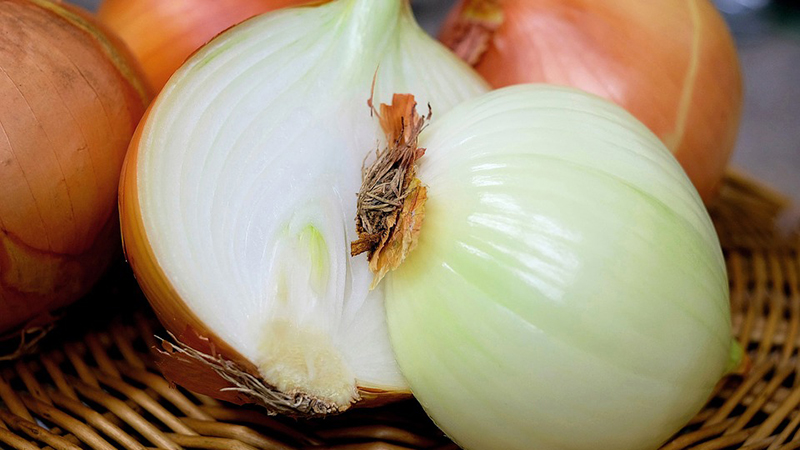
Fresh onions contain the following nutrients (in milligrams):
- calcium - 23;
- iron - 0.2;
- magnesium - 10;
- phosphorus - 29;
- potassium - 146;
- sodium - 4;
- zinc - 0.2;
- copper - 0.039;
- selenium - 0.005;
- fluorine - 0, 011.
In addition to these substances, the vegetable contains the following trace elements:
- Silicon that stimulates collagen synthesis.
- Cobalt, which is found in vitamin B12. It helps activate enzymes needed for fatty acid metabolism and folate metabolism.
- Manganese, essential for the formation of bone and connective tissue. The element takes an active part in the metabolism of amino acids, carbohydrates, catecholamines.
Fresh, boiled, fried, stewed, baked Onions contain fat-soluble vitamins: E, K and beta-carotene, as well as water-soluble vitamins: C, B1, B2, B3 (PP), B4, B5, B6 and B9.
In cooked onions
Consider the chemical composition of onions with different heat treatment methods.
Boiled (mg):
- calcium - 22;
- iron - 0.2;
- magnesium - 11;
- phosphorus - 35;
- potassium - 166;
- sodium - 3;
- zinc - 0.2;
- copper - 0.001;
- manganese - 0.2;
- selenium - 0.006.
Fried (mg):
- calcium - 20;
- iron - 0.3;
- magnesium - 9;
- phosphorus - 33;
- potassium - 133;
- sodium - 12;
- zinc - 0.2;
- copper - 0.06;
- manganese - 0.2;
- selenium - 0.001.
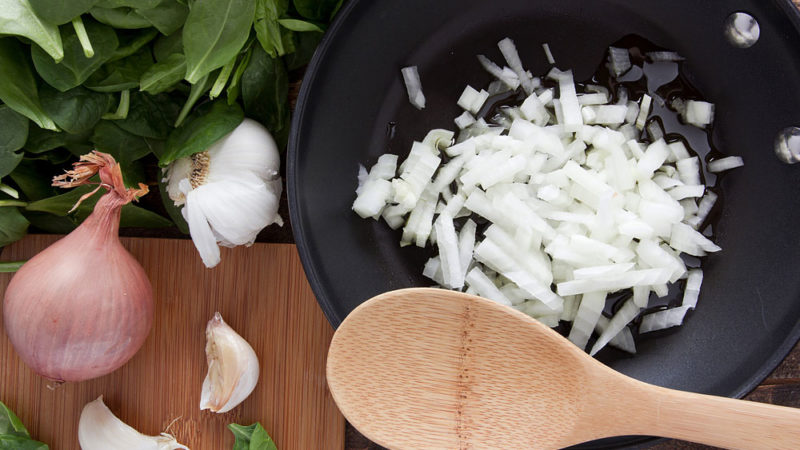
Braised (mg):
- calcium - 22;
- iron - 0.2;
- magnesium - 11;
- phosphorus - 35;
- potassium - 166;
- sodium - 3;
- zinc - 0.2;
- copper - 0.001;
- manganese - 0.2;
- selenium - 0.006.
Baked (mg):
- calcium - 37;
- iron - 0.9;
- magnesium - 17;
- phosphorus - 71;
- potassium - 212;
- sodium - 4.7;
- zinc - 1;
- copper - 0.1;
- manganese - 0.2.

Green onions
Green onions contain fat-soluble vitamins A, E, K, and beta-carotene, and water-soluble vitamins C, B1, B2, B3 (PP), B4, B5, B6 and B9. Besides:
- calcium - 52 mg;
- iron - 0.5 mg;
- magnesium - 16 mg;
- phosphorus - 25 mg;
- potassium - 159 mg;
- sodium - 15 mg;
- zinc - 0.2 mg;
- copper - 0.06 mg;
- manganese - 0.2 mg;
- selenium - 0.2 mcg.
Leek
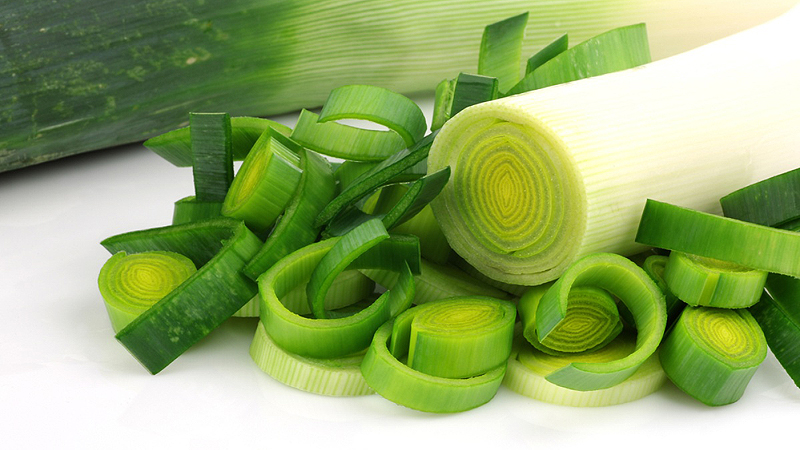
Leek contains such fat-soluble vitamins as: A, E, K and beta-carotene, as well as water-soluble vitamins C, B1, B2, B3 (PP), B4, B5, B6 and B9.
- calcium - 59 mg;
- iron - 2.1 mg;
- magnesium - 28 mg;
- phosphorus - 35 mg;
- potassium - 180 mg;
- sodium - 20 mg;
- zinc - 0.1 mg;
- copper - 0.1 mg;
- manganese - 0.5 mg;
- selenium - 1 mcg.
Shallot
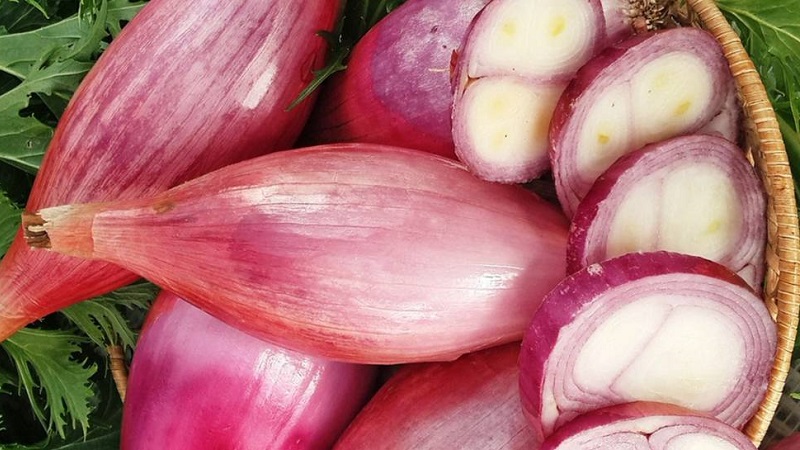
Shallot contains the following fat-soluble vitamins: E, K and beta-carotene, as well as water-soluble ones: C, B1, B2, B3 (PP), B4, B5, B6 and B9.
- calcium - 37 mg;
- iron - 1.2 mg;
- magnesium - 21 mg;
- phosphorus - 60 mg;
- potassium - 334 mg;
- sodium - 12 mg;
- zinc - 0.4 mg;
- copper - 0.1 mg;
- manganese - 0.3 mg;
- selenium - 1.2 mcg.
Onion
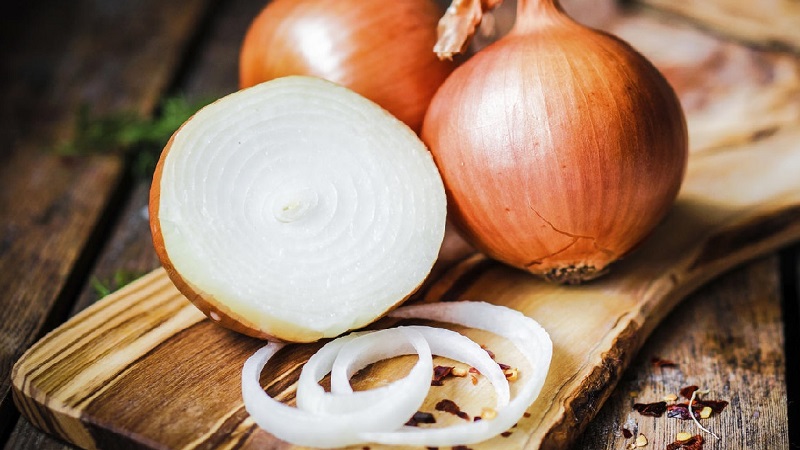
The classic vegetable contains fat-soluble vitamins: A, E, K and beta-carotene, as well as water-soluble ones: C, B1, B2, B3 (PP), B4, B5, B6 and B9.
- calcium - 31 mg;
- iron - 0.8 mg;
- magnesium - 14 mg;
- phosphorus - 58 mg;
- potassium - 175 mg;
- sodium - 4 mg.
Sprouted "turnip" contains the maximum amount of vitamins and minerals. Useful material concentrated in the lower part of the feather, which is white and is located at the exit of the bulb.
Is the composition of red and white onions different
100 g of a red vegetable contains 2 g of fiber, 0.8 g more than white varieties. Both bulbs contain the flavonoid quercetin and antioxidants - active agents in the prevention of heart disease and some cancers.
Important. Flavonoids are concentrated in the outer layers. Red varieties contain more quercetin and anthocyanins. Whites contain more iron and sugars. Red onions have twice the amount of antioxidants than white ones.
Calorie content, BJU and glycemic index of onions per 100 g
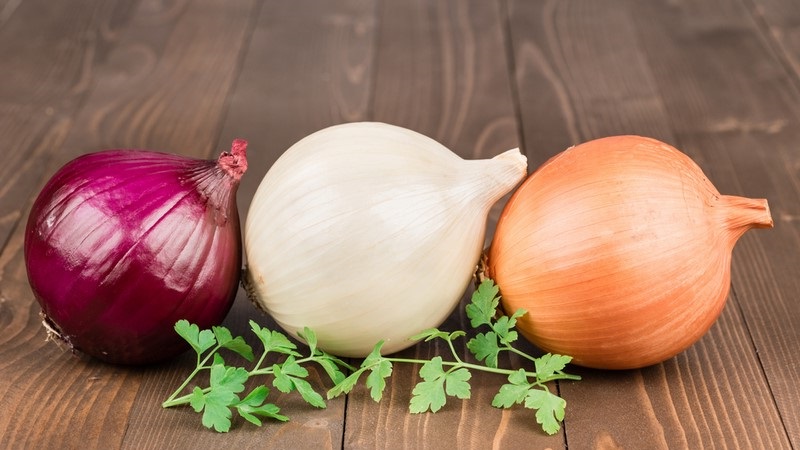
Fresh vegetable has a low glycemic index (GI), it does not provoke a sharp rise in blood sugar, therefore it is not contraindicated for people with diabetes. The energy value of the product and the GI change depending on the method of its preparation:
| Method of preparation and type of onion | Calorie content | Proteins, g | Fat, g | Carbohydrates, g | GI |
| fresh | 42 kcal | 1,1 | 0,1 | 9 | 10 |
| in boiled | 42 kcal | 1,36 | 0,19 | 8,75 | 15 |
| fried | 258 kcal | 3,2 | 14 | 31 | 98 |
| stew | 48.5 kcal | 1.35 | 0.05 | 7.9 | 15 |
| baked | 36.6 kcal | 1,3 | 1,78 | 8,4 | 15 |
| green onions | 32 kcal | 1,8 | 0,2 | 7 | 39 |
| leek | 61 kcal | 1,5 | 0,3 | 14 | 15 |
| shallot | 72 kcal | 2,5 | 0,1 | 17 | 32 |
| onion | 41 kcal | 1,4 | 0,2 | 8,2 | 10 |
It should be borne in mind that when salt is added to onions, its calorie content increases by 2-3 kcal. Other additives, spices, sauces, oils, etc. also play a role. Likewise, the glycemic index changes during cooking - for example, caramelizing onions in sugar will significantly increase the GI.
Is the calorie content of red and white onions different?
This is not to say that the color of the bulbs affects its nutritional value. Also, the number of calories depends on the content of proteins, fats and carbohydrates in the vegetable. The calorie content of classic onions is 42 kcal, and of sweet varieties - 32-35 kcal. Any onion can be sweet, regardless of color.
Which method of cooking the onion is the most and least calorie
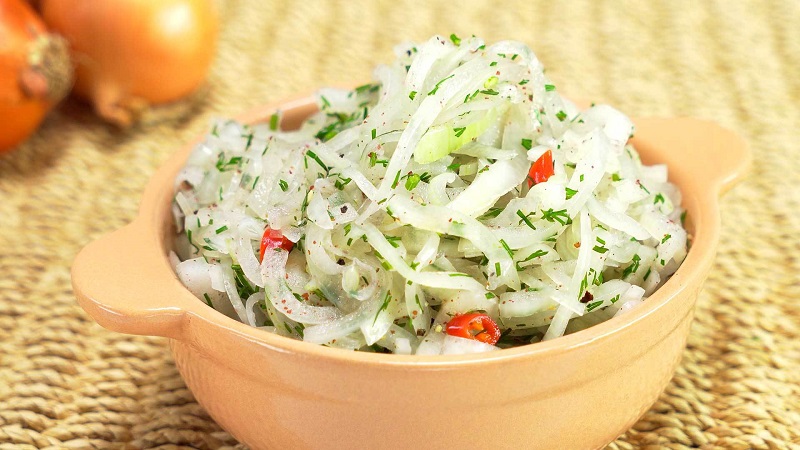
The largest number of calories (349 kcal per 100 g) contains dehydrated (dried) onions, which are flakes.
Reference. This product is made on an industrial scale using drying machines. All water evaporates from the vegetable, which makes up 90% of the mass of the raw onion.
Baked onions contain the least calories. That is why dieters prepare it this way. So that the calorie content does not increase, it is not recommended to add sauces or oil to the vegetable.
Conclusion
Onions in almost any form (except fried) are low in calories. This is especially useful for those looking to lose weight. In addition, this vegetable contains many nutrients that a person needs. Many of them are preserved during heat treatment.